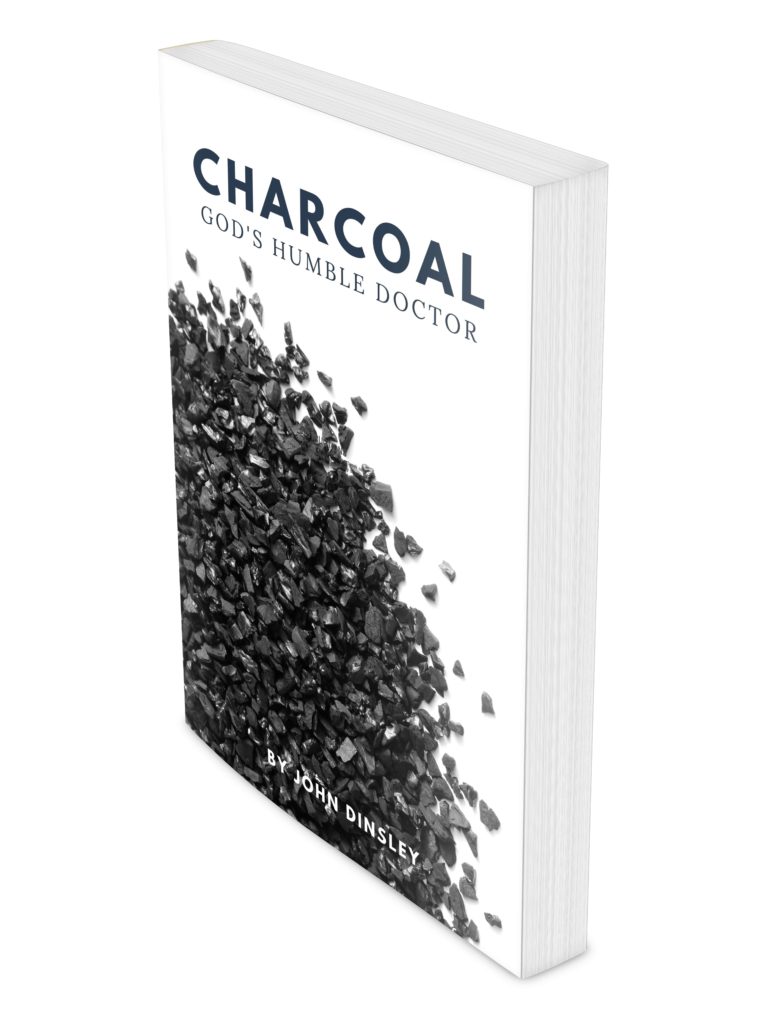
Is tap water safe to drink?
Share on facebook Share on twitter Share on linkedin Share on pinterest Share on reddit Share on wha

Share on facebook Share on twitter Share on linkedin Share on pinterest Share on reddit Share on wha

Share on facebook Share on twitter Share on linkedin Share on pinterest

Share on facebook Share on twitter Share on linkedin Share on pinterest

Share on facebook Share on twitter Share on linkedin Share on pinterest
Activated Charcoal is used in hospitals and clinics around the world for poisoning and drug overdose, in hemoperfusion cartridges, kidney and liver dialysis units, breast cancer surgery, wound dressings, ostomy bags, anemia of cancer, pruritus, dysentery, and …
Historical Sketch
After the suppression of the sciences, first by pagan Rome around 300 A.D. and then by papal Rome on through the Dark Ages, charcoal reemerged in the 1700s as a prescription for various conditions. Charcoal was often prescribed for bilious problems (excessive bile excretion). The use of charred wood was mentioned for the control of odors from gangrenous ulcers.
By the mid 1800s charcoal, as a medicinal, suddenly became a well known treatment for a number of health conditions. Notice this entry:
“…Charcoal mixed with bread crumbs or yeast, has long been a favourite material for forming poultices, among army and navy surgeons. The charcoal poultice has also obtained a high character in hospital practice as an application to sloughing ulcers and gangrenous sores, and recently, this substance has afforded immense relief in numerous cases of open cancer, by soothing pain, correcting foetor, and facilitating the separation of the morbid structure from the surrounding parts. It is unnecessary to mention other instances of its utility; for in this form Charcoal is now admitted into the London Pharmacopoeia, and it is in general use in all naval, military, and civil hospitals…” James Bird M.R.C.S. (Surgeon – Royal Glamorgan Militia, 1857)
Imagine, “…in general use in all naval, military, and civil hospitals.”
Eclectic Medical Journal, 1876.
John M. Scudder, MD, like scientists today, was repeatedly asked how different remedies worked. He addressed this perennial question in an article in the Eclectic Medical Journal. He uses charcoal as his first illustration. He writes:“How the remedies act to cure disease we do not know and can not know, and it is of far less importance to us than the simple fact that they will cure.I could not give a plausible guess why a few doses of triturated charcoal, not a grain in all, should check a severe hemorrhage. And yet I know the fact as well as I know that the sun rose this morning. As an example, Thomas French, a man weighing over two hundred pounds, stout and full blooded, came to me complaining that he was having repeated hemorrhages from the nose that was rapidly exhausting him. It had been going on for some days, and the means employed had utterly failed. His face was pallid, the pulse soft and weak, extremities cold. I gave him ten grains of triturated charcoal to be taken in grain doses every three hours. There were three ineffectual efforts at hemorrhage after commencing the powders, but it was effectually stopped the second day! Now if this was but a single case we would think but little of it, but I have repeated it scores of times with the same result.”King’s American Dispensatory of 1898“Carbo ligni (wood charcoal), It acts as an absorbent (both fluids and gases) and disinfectant. Its internal employment will be found useful in those digestive derangements which are associated with offensive breath and disagreeable belchings; also to correct the fetid condition of the stools in dysentery. It is also useful in acidity of the stomach, flatulency [gas], and in the nausea and constipation attending pregnancy. It is also very useful in internal heat and irritation of the stomach, with acidity; sick headache; diarrhoea; cholera infantum, etc. In cases of sick headache, due to gastric acidity or derangement, and which are ushered in with blurred vision, photopsia, and finally nausea and intense headache, I have found a drachm [dram] of charcoal mixed in a little syrup, to which is then added about a gill of water, and ten or twelve drops of ether, to afford prompt relief; in very obstinate cases, the dose may require to be repeated two or three times, every twenty or thirty minutes (J. King). In some cases charcoal may be advantageously combined with the subnitrate of bismuth as a sedative; and where a laxative action is required, rhubarb may be beneficially added to it. Bilious colic is said to have been cured by it, in doses of one drachm in two fluid ounces of burnt brandy, repeated as required.Externally, it may be used in poultices to correct fetor of ulcers, arrest gangrene, etc., and is efficient in many cutaneous [skin] diseases. It absorbs foul gases generated in vaults, sewers, etc. It is also a useful haemostatic [agent to control bleeding], having arrested epitasis [nose bleeding] when subsulphate of iron had failed.“The specific use of charcoal,” says Dr. Scudder (Spec. Medication) “is to arrest hemorrhage from the bowels. It has been used in enema, finely powdered, to four ounces of water, thrown up the rectum. Why this checks it I can not tell; that it does it, I have the evidence of my own eyes. For several years I have employed the second decimal trituration [finely ground powder] as a remedy for passive hemorrhage, with most marked benefit. I employ it in threatened hemorrhage during typhoid fever; in menorrhagia [abnormally high menstrual bleeding], especially when chronic; in prolonged menstruation; the watery discharge that sometimes follows menstruation; hemorrhage from the kidneys; hemorrhage from the lungs; and in some cases of leucocythemia. A good indication for this remedy is a small, pallid tongue with lenticular spots, and with this it may be given in any form of disease.” It occasionally enters into tooth-powders, and may be used with advantage to correct the fetor of the mouth, and cleanse the teeth.”
The British Pharmaceutical Codex, 1911
This was the British equivalent of the American Dispensatory, for the use of medical practitioners and pharmacists. It includes hundreds of plants, some of them toxic, most not, and a few more or less toxic chemicals. It focuses more on single ingredients such as alkaloids and less on whole plants. It was written by pharmacists for pharmacists. Here are a few interesting entries published by direction of the Council of the Pharmaceutical Society of Great Britain, 1911.“Action and Uses … It is used internally as an antiseptic and absorbent, in flatulent dyspepsia [acid indigestion], intestinal distension, diarrhea, and dysentery. Its action is mainly mechanical, removing mucus and stimulating the movements of the stomach and intestine. Externally, charcoal is absorbent and deodorant. It is sometimes employed as a poultice for fetid ulcers, some of the charcoal being spread on the surface of the poultice to retain its oxidizing properties. The powder… may also be administered on buttered bread in the form of sandwiches. Lozenges of charcoal… and charcoal biscuits are a popular form of administration. Charcoal tooth powders may contain from 25 to 75 percent of wood charcoal.”Ellingwood’s Therapeutist, 1908
Finley Ellingwood, MD, was a clinician who specialized in obstetrics and gynecology. He was of the American Eclectic school and began this journal as a forum for physicians. He includes this note about charcoal and its known properties as an antidote for poisons:“It is stated by those who are apparently informed, that many Japanese physicians use charcoal as a general antidote to agents which have been taken into the stomach which will produce poisoning.
These observations, it is stated, have been farther proved by French physicians who claim that if powdered charcoal is taken soon after the ingestion of poison in very large quantities, its influence upon the poison will be noticed from the first.A tablespoonful may be mixed with a little water and taken frequently in divided doses, the whole amount within one or two hours.”The following was a leading article in the Therapeutist and was contributed by A. C. Hewett, MD, Chicago, Illinois: “I recently received a ‘hurry call’ to attend Mrs. H. — ‘very sick’. The patient, a woman in good circumstances aged about fifty years, was found to be in fact very ill; pale-gray in the face, forehead and limbs covered with a clammy perspiration, pulse so small and rapid that counting was next to impossible, suffering severe gastric and abdominal pain, ‘had been vomiting copiously till nothing but a stringy mucus could be ejected’. Asked what she had eaten; I was told coffee, cross buns and canned boneless chicken; I at once diagnosed toxins, and gave charcoal, prepared as per the following Rx: Calcined willow charcoal and wheaten flour two heaping tablespoonfuls each; common table salt a level teaspoonful; warm water four ounces. The charcoal, flour and salt were first well mixed. Water was added little by little for convenience and speedy result.Dosage, a brimming tablespoonful every ten minutes regardless of recurrent vomitings. The first dose was partly ejected. The second retained in spite of attempts to vomit. After taking the third spoonful, pain and nausea gradually subsided. Of course a hot water bag and bottles were put to her feet, warmed flannels wrapped around her knees and a hot water bottle placed in her hands, which she smilingly and soon nested upon her stomach… I directed continuance of hourly doses of the charcoal mixture till all should be taken. An uneventful and rapid recovery ensued.Not long after I attended another patient similarly but not so severely affected. She was much younger; had “lunched,” taking coffee, doughnuts and canned salmon. The charcoal mixture and applied heat, brought similar result, and the admonition to use charcoal in food poisoning.”
In spite of all the technical advances man has made, spoiled food, including spoiled canned food, and the many other health concerns of a hundred years ago, are still very relevant today. It seems clear that charcoal’s medicinal value was well known and enthusiastically promoted by many doctors, to such an extent that this ad appeared in the 1908 the Sears, Roebuck and Co. catalogue:
Willow Charcoal Tablets
“Every person is well acquainted with the great benefit derived from willow charcoal in gastric and intestinal disorder, indigestion, dyspepsia, heartburn, sour or acid stomach, gas upon the stomach, constant belching, fetid breath, all gaseous complications and for the removal of the offensive odor from the breath after smoking.”
